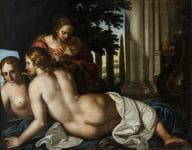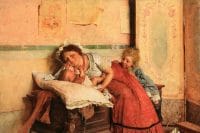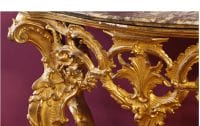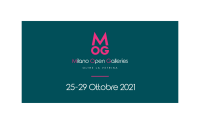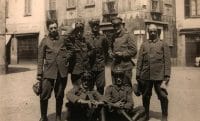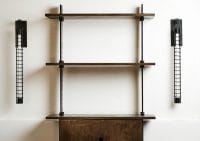Flâneur in Milan – search for hidden beauty and discover pieces of history
Great design can hide anywhere, the difficulty is finding it. Gianluca Greco, owner of Flanerie Milano, tells us about that research work, the desire to see and make known the beauty of our and international design. Curiosity, knowledge and respect for things of the past lead to finding real pieces of the history of design and of our country.
- NOWARC: When and how was Flanerie Milano born?
GIANLUCA GRECO: Flanerie opened its doors in March 2017 and was created to reconcile my fascination for second-hand goods with a natural propensity, precisely, for stroll.
On the one hand, I have always been passionate about flea markets. The economic dimension of second-hand goods has always intrigued me: because an object that has already been used and "consumed" still retains a residual value, to the point of still having a market? On what basis are sellers and buyers able to assign a price to it?
On the other hand I have always had an attitude that could be defined as flâneur, a figure of modern life outlined, among the first, by Edgar Allan Poe in the story The man of the crowd, and then processed by Baudelaire, Benjamin and other. In Italian it is only partially translatable as "vagabond" or "wanderer": in reality the flâneur è the one who wanders around the modern city slowly, apparently aimlessly, but in doing so he manages to appreciate all the beauty that surrounds it, which others, dominated by the frenzy of metropolitan life, cannot see.
- NOWARC: How did you choose what to specialize in?
GIANLUCA GRECO: Specialization arises from the desire to enhance what I see, in particular in the Milan area and more generally in Lombardy. The heart of my offer is the Italian design of the sixties and seventiesa, but without giving up some "escapes" backwards or forwards, if I happen to come across pieces from previous or subsequent periods that I consider worthy of note.
The big exception is the furniture of the Herman Miller, like the libraries of George Nelson, or that absolute masterpiece that is the Aluminum group of the Eames spouses, among other things imported into Italy precisely from Milan DePadova, one of the symbolic companies of Italian design.
- NOWARC: How is the modern antiques market changing?
GIANLUCA GRECO: Like all emerging markets, the modern antiques market is also extremely dynamic and subject to fashion: in a few months the public's tastes can change radically and furnishings that, let's say, two years ago everyone was looking for are today ignored, or vice versa. The positive aspect of this “volatility” is that i clients are more and more competent and therefore more demanding.
The skill of the seller consists inanticipate future trends, without giving up on offer customers what they are looking for in the present moment.
- NOWARC: What are the differences between Italy and abroad?
GIANLUCA GRECO: Until a few years ago, buying used, in Italy, was a not very common and almost socially stigmatized practice, while in other countries, such as England, the United States or France, it is a very normal thing.
The paradox is that the design, a chapter in our cultural history that the whole world admires us, in Italy it is still undervalued. Perhaps because, as also happens in other sectors of art or culture, also in the case of design we grew up among so many masterpieces that we have become almost indifferent.
But now things, albeit slowly, are changing. In Italy we are always very attached to "labels": we love to see them applied to objects, it seems that if something doesn't have some label we can't even see it. And I have to say that the label vintage, although a bit generalist, contributed a little to reviving interest in design.
In any case, for modern antique shops like mine, sales abroad remain a rather significant part of overall sales.
- NOWARC: What is the role of auctions: how do they influence the market, how do they impact customer perception?
GIANLUCA GRECO: Auctions are fundamental: they are used to become aware of the value of our heritage, offer a useful reference for determining the price level e they help to understand current fashions.
However, you have to know how to read the quotes. Some objects can reach figures with five or six zeros, but we are talking about design masterpieces, unique pieces which in some cases have historical value and are testimony to an era.
- NOWARC: What if we're talking about valuable but accessible vintage instead?
GIANLUCA GRECO: With the same quality of workmanship and refinement of design, the prices of vintage they are significantly lower than the new one. To give an example: for the same price, a sofa vintage, of a prestigious brand and with cutting-edge design, after forty years it is in better condition than a sofa purchased two years ago in fastfurniture. A new object, the day after purchase, is already worth a third or even less of its price, while an object vintage can increase its value over time. So much so that, as happens with any kind of collecting, even design enthusiasts (at least the most astute ones) not only manage to satisfy their "hunger" for collecting but often also manage to earn money from it.
A certain propensity for exchange is therefore innate among design enthusiasts and this is what makes the markets we were talking about at the beginning so interesting.
- NOWARC: How do you find the most sought-after pieces?
GIANLUCA GRECO: Purchase almost exclusively from private individuals, who have bought or inherited. This is the most fascinating aspect: many of the objects that I bought have accompanied the life of families, were purchased out of passion, sometimes with sacrifices. Appreciating them and making them appreciate is also a form of respect for that hidden history.
- NOWARC: Tell us about some pieces that Flanerie Milano has acquired.
GIANLUCA GRECO: At least three come to mind.
The Kubirolo of Sottsass, a series of modular cubes intended for children's bedrooms. I was lucky enough to acquire a batch in a wood-colored version that had never been presented on the market vintage. The owner was amused: he couldn't believe that what he had bought decades earlier for his daughter's room had become a cult object, desired by collectors all over the world!
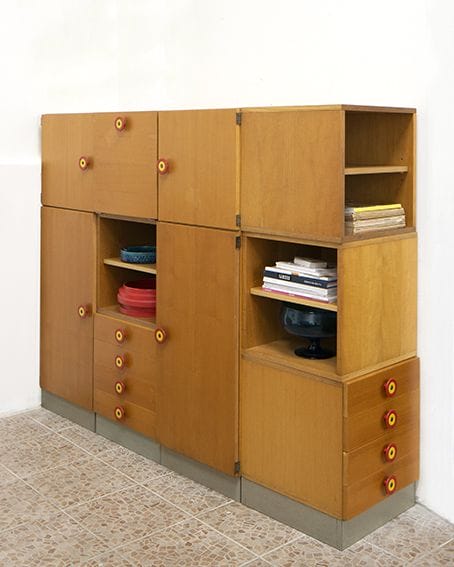
Then, the Samaden armchair with its footstool by Caccia Dominioni for Azucena. An armchair that was kept in the house for almost sixty years, on which only one person sat. The wife still had Azucena's invoice! The condizioni were excellent, it looked like it had come out of the warehouse the day before. It was exciting to exhibit it, the heirs of the Caccia Dominioni archive only had an old archive photo of it.
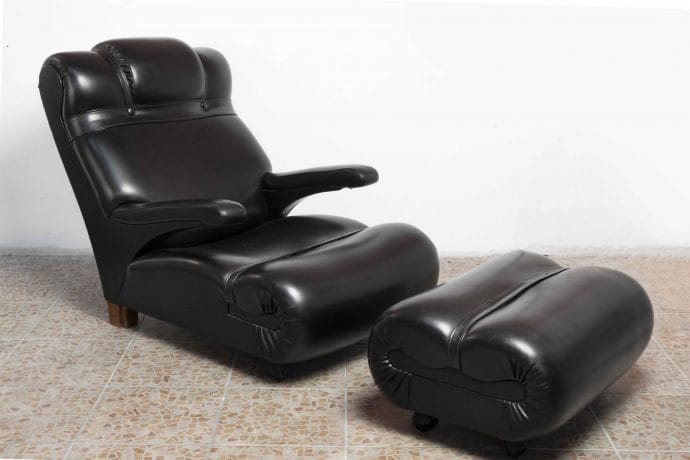
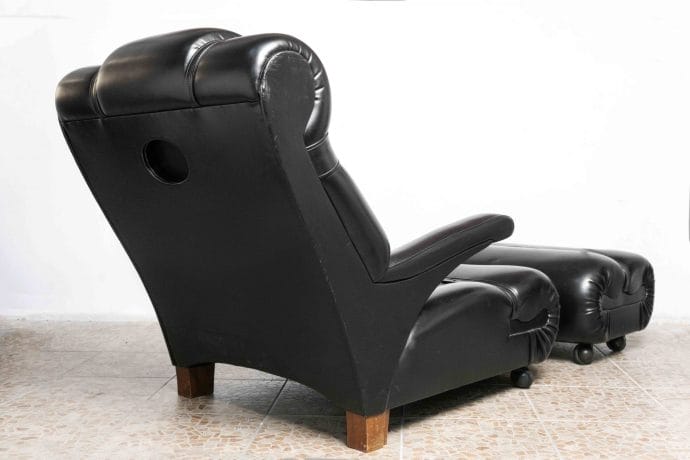
Finally, I recently acquired a pair of wall lamps by Franco Albini ( On sale here on NowArc.com ). They come from one of the first buildings created by Albini, the INA palace in Parma. They were designed specifically for this building, which housed seven. Lamps illuminated the staircase, the photograph of which can be found in many architectural books.
La crafts of these lamps is absolutely consistent with the environment for which they are intended, that is reduced to the essentials, as is Albini's style: a cylindrical neon protected by a brass cage hanging from a hook. They are reminiscent of lanterns or torches to illuminate the path. Even the ladder, like the lamps, is detached from the walls of the well, which in jargon is also called a cage, if not for some supports. Second Gio Ponti this building was what to look forward to”understand today's architects".
He was referring to architecture in the aftermath of the Second World War, but I like to think that these words are also a good omen for the present moment, after such a dramatic year as the one we have been through.
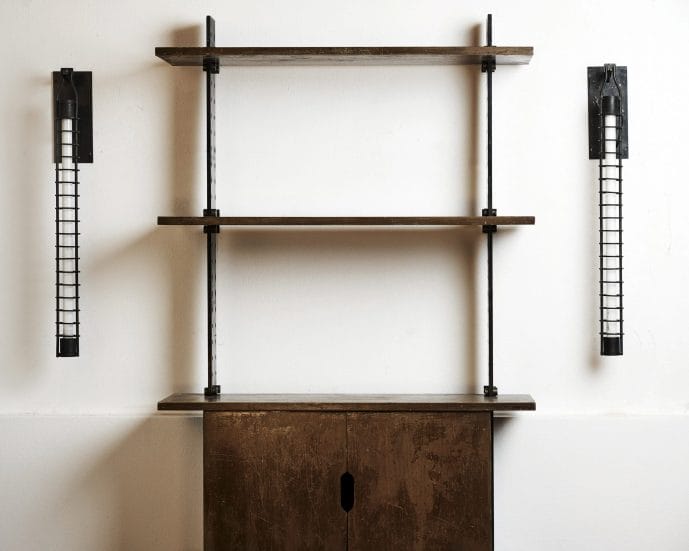
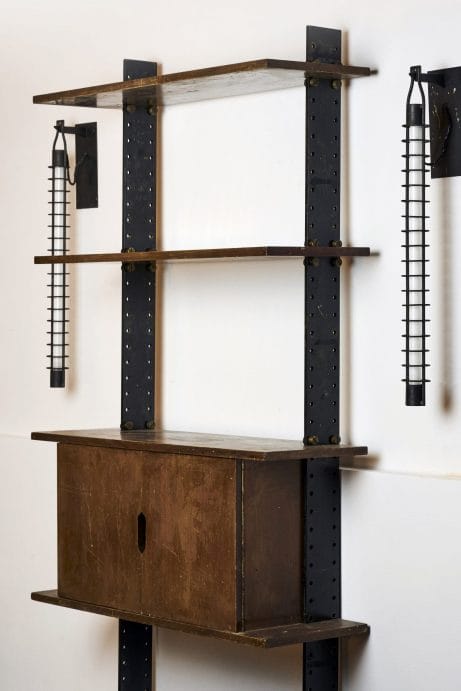
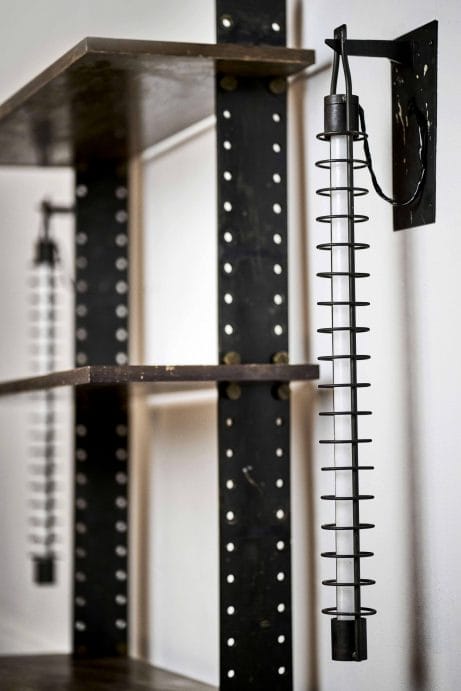
Gianluca Greco – Flanerie Milan
Photographs by Daniele Portanome
